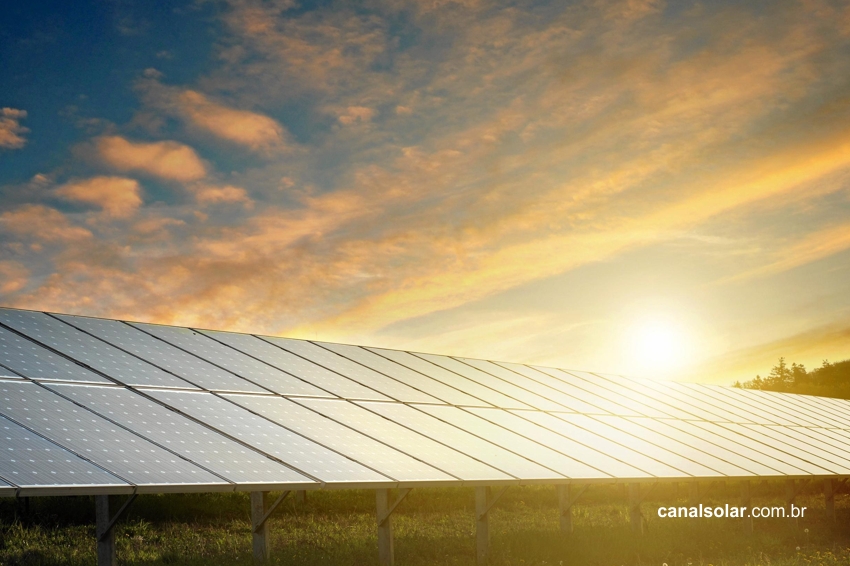Environmental licensing is an integral step of any large engineering project. Licensing photovoltaic projects is simpler than that carried out in hydroelectric and thermoelectric plants, for example, due to the reduced environmental impacts of photovoltaic technology.
Even so, the subject is relevant and we need to understand how the process works. Environmental licensing is regulated by the competent bodies within SISNAMA (National Environmental System) and MMA (Ministry of the Environment).
The licensing obligation is expressed in the Federal Law No. 6938 of 1981 which foresees “the construction, installation and operation of establishments and activities that use environmental resources, which are actually or potentially polluting or capable, in any form, of causing environmental degradation, will depend on prior environmental licensing”.
The purpose of the licensing process is to identify the impacts of the project on the environment and humans, and thus propose appropriate measures to avoid, mitigate or compensate for such impacts. In the environmental licensing process, CONAMA Resolution No. 001/1986 establishes that activities that cause significant changes to the environment require the prior preparation of an EIA/RIMA (Environmental Impact Study and respective Report).
Its function is a technical analysis of various aspects of potential environmental, social and economic impacts of a given project. For lower impact activities, simpler studies may be required, such as the RAS (Simplified Environmental Report).
The environmental licensing procedure for potentially polluting activities normally has three phases:
- Prior License (LP): approves the location and design of the project, certifying its viability;
- Installation License (LI): authorizes the installation of the activity or enterprise;
- Operating License (LO): authorizes the start of operation of the activity or enterprise.
Environmental Licensing and the Electricity Sector
In 2001, during the energy crisis, changes occurred involving environmental licensing, as its complexity and slowness did not meet the Provisional Measure No. 2,152-2/2001 of new energy generation projects necessary to increase the supply of electrical energy in Brazil.
That year, CONAMA issued Resolution No. 279/2001, which established a simplified environmental licensing procedure for electrical projects with a small potential for environmental impact, subject to prior presentation of the RAS.
Environmental Licensing in the solar energy sector
Currently, Environmental Licensing for this type of generation faces some difficulties, especially for smaller plants. Although implicit in CONAMA Resolution No. 279/2001, the environmental licensing of photovoltaic solar energy generation projects could be included within the category Art. 1 IV – wind farms and other alternative energy sources.
However, the photovoltaic source, in relation to other alternative energies, has a low environmental impact, which would make it worthy of different treatment. Currently, the requirements are being established by current state legislation, such as in the states of Bahia, Minas Gerais, Paraná and São Paulo.
At the state level, the São Paulo government's initiative to regulate the environmental licensing of solar energy generation projects stands out (SMA Resolution No. 74/2017).
This resolution aims to regulate environmental licensing for photovoltaic solar energy in the state of São Paulo. The projects are analyzed according to the complexity of the socio-environmental impacts and according to the expected installed power of each project, as follows:
- Power above 90 MW: the procedure for prior licensing will be the RAP (Preliminary Environmental Report);
- Power between 5 MW and 90 MW: the licensing procedure will only be the EAS (Simplified Environmental Study);
- Power less than 5 MW: (including distributed micro and mini generation) under the terms of Normative Resolutions 482 and 687 of ANEEL (National Electric Energy Agency): authorization will only be required for the suppression of native vegetation or for installation in water source protection areas, when applicable.
The standards clearly describe which structures are covered by the environmental licensing of the solar project, including transmission or distribution lines, substations, roads, works or equipment.
Environmental licensing for the generation of renewable energy from photovoltaic solar energy, if it does not have specific and clear regulations, may inhibit market interest, for fear that it will be an excessively lengthy and bureaucratic process, like other activities subject to environmental licensing. in Brazil.
Therefore, it is crucial that there is a clear definition of the requirements and procedures for the environmental licensing of solar energy projects, making the sector more attractive and viable for both investors and those seeking to specialize in courses such as solar energy.

















5 Responses
Question: Can a solar plant be licensed in an environmental protection area without vegetation?
washington,
If you need help, you can send me an email and I will help you with this licensing issue.
Good morning Gabriela, I have some environmental questions regarding the 2.5mW plant, could you send me your contact details?
I have several microgeneration projects, 2.5 MW… What is the procedure? Where to start?
Investors are demanding licensing before making investment.
What are the deadlines for obtaining this license?
PS: Projects are in Minas Gerais and Bahia.
Can I install solar panels in a water source area?